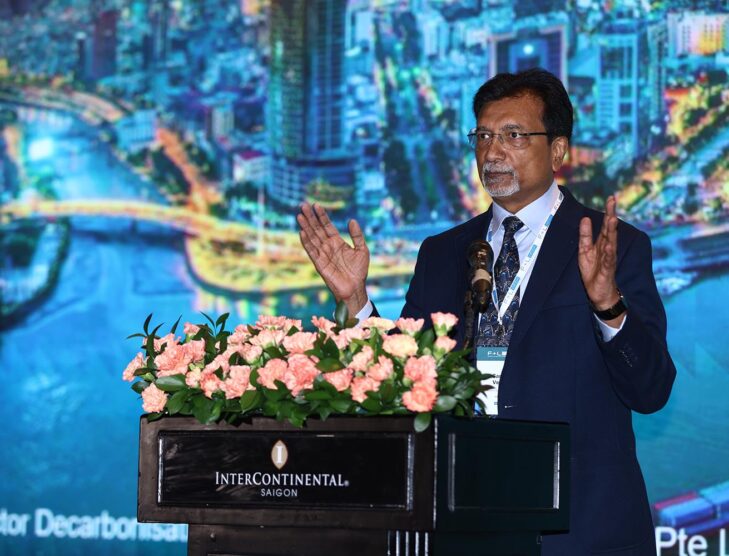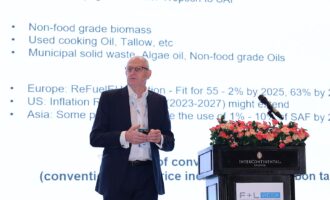
Wärtsilä: 30% of ship orders choose hydrogen, ammonia or methanol
The International Maritime Organization (IMO) recently updated its greenhouse gas (GHG) Strategy in July 2023, setting an ambitious target of net-zero emissions by 2050. However, the maritime sector is recognised as one of the most challenging industries to decarbonize.
At F+L Week 2024, Sanjay Verma, director of Decarbonization Solutions at Wärtsilä Singapore, highlighted the importance of implementing efficiency and alternative fuel measures to combat emissions. He noted that significant efficiency improvements, resulting in up to 30% less fuel consumption, can be achieved through advancements such as hybridization, propulsion changes, solar power, batteries, wind propulsion, and air lubrication technologies. These technologies are at various stages of development.
Despite these advancements, Verma stressed the pivotal role of sustainable fuels in meeting the net-zero requirement. Currently, 100% of ships rely on heavy diesel fuels, but the focus is shifting towards non-traditional, non-fossil fuels—green hydrogen, green ammonia and green methanol, says Verma. Approximately 30% of ships ordered last year opted for these more environmentally friendly fuels, he says.
While acknowledging the significant potential of ammonia due to its zero-carbon properties, Verma also highlighted the unique challenges associated with its use, including toxicity and handling issues.
Ammonia by itself is a bad burner, requiring mixing with a certain amount of diesel to make it burn, says Verma. Wärtsilä is exploring methods to crack part of the ammonia, convert it to hydrogen and blend it for faster burning—to achieve zero emissions. Wärtsilä introduced its first ammonia engine at the end of 2023.
The current use of ammonia, derived from coal or natural gas, is not environmentally friendly. Green ammonia, produced through sustainable methods, is not yet widely accessible, although there is a gradual increase in its availability.
Verma also addressed the storage challenges associated with these alternative fuels, such as the extreme temperature requirements for keeping ammonia, methane, and hydrogen. Despite these issues, there is a growing interest in dual-fuel vessels, with approximately 5% of ships ordered last year opting for ammonia propulsion. Multi-fuel combustion engines offer flexibility in adopting green fuels, further driving the transition towards a sustainable maritime industry.









